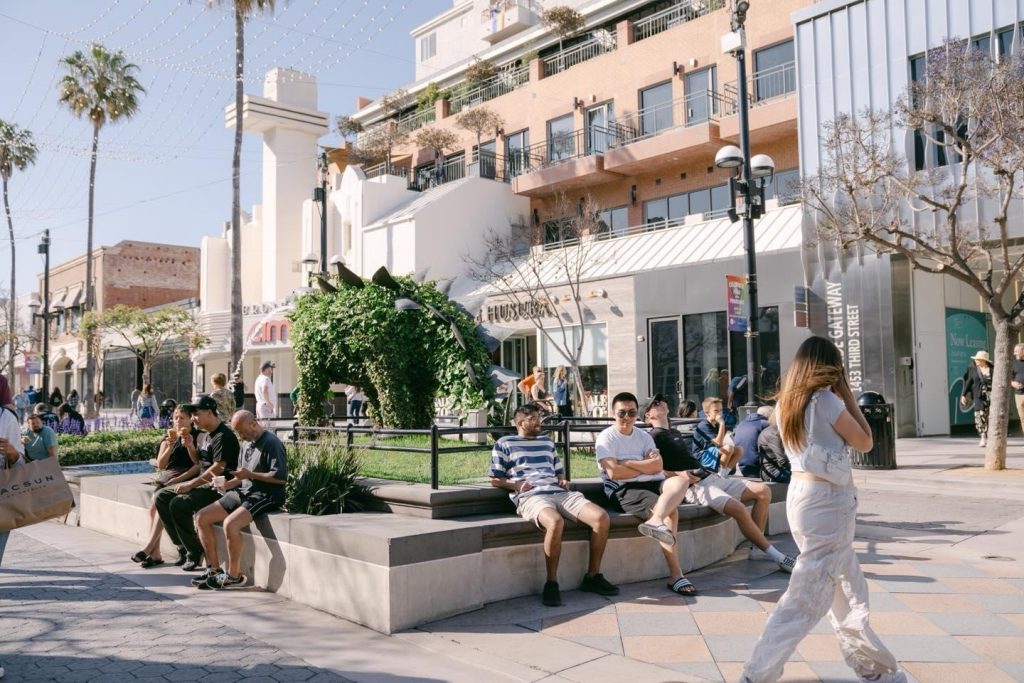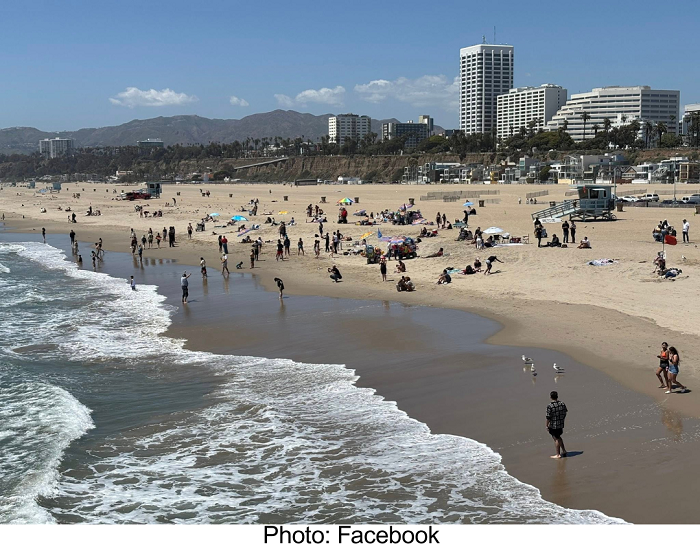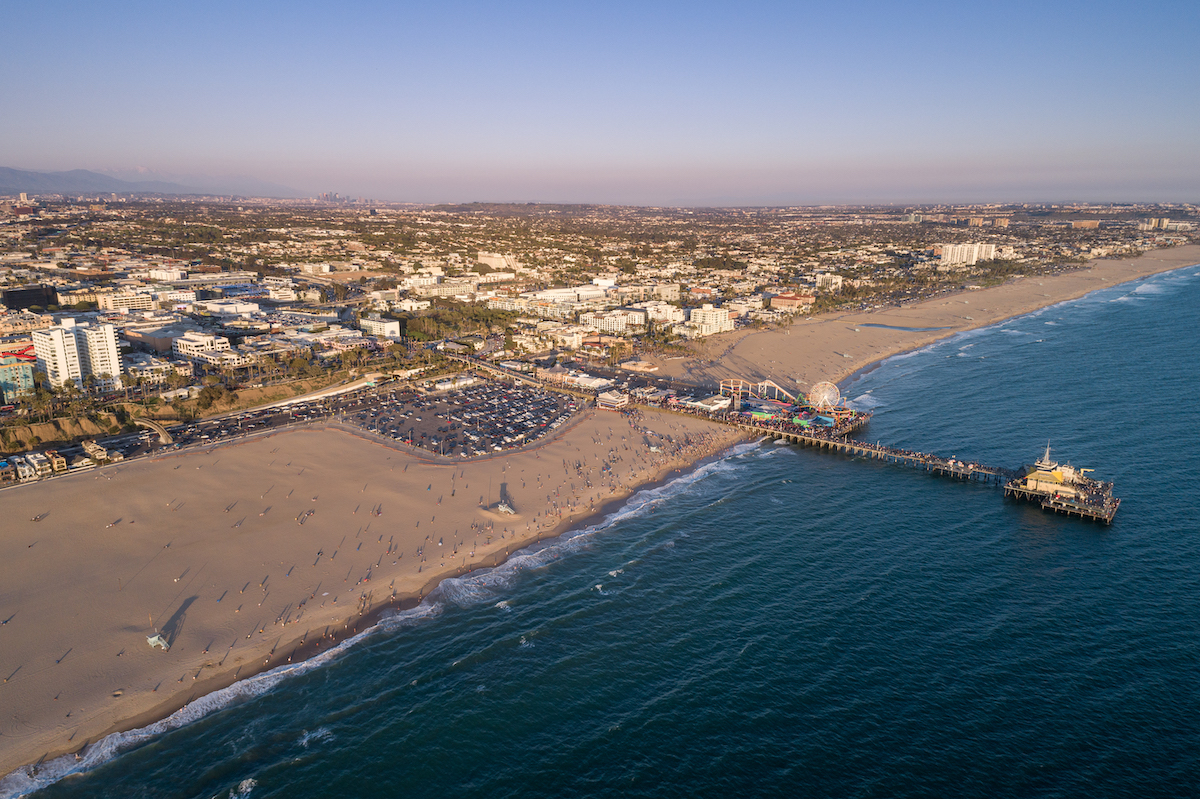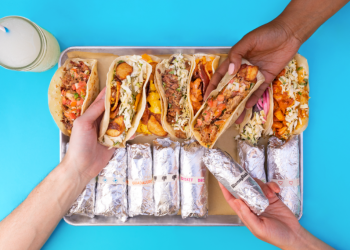
Long before Santa Monica became a global destination, it was a humble seaside town defined by salt air, sunshine, and a sense of belonging. Families gathered on the sand, cyclists rolled down Ocean Avenue, and neighbors met at cafés to watch the fog lift off the Pacific. The city’s rhythm was guided not by cranes or traffic lights but by the tide itself — steady, patient, and restorative.
That small-town spirit was woven into Santa Monica’s earliest vision. When the pier opened in 1909 and the bluffs of Palisades Park were landscaped soon after, the founders promised something simple yet profound: that life here would always feel close to the ocean, open, light-filled, and human-scaled. For decades, that promise held true, giving the city its rare blend of beach charm and civic soul.
The Shift Toward Density
Today, a competing vision dominates. Where modest beach cottages once stood, luxury towers rise. Where locals once found surf shops and independent cafés, national chains now occupy much of downtown. City leaders say Santa Monica must build to survive, to meet housing mandates and remain relevant.
But unchecked growth risks eroding the very qualities that made the city desirable in the first place. Tourism, once the city’s lifeblood, has yet to fully recover since COVID. Visitors still come for the beach, the pier, and the promenade, but fewer linger. What drew them here was never density or spectacle; it was the feeling of openness, community, and the promise of restoration at the edge of the sea.
The Promenade as a Mirror
Nowhere is this tension clearer than on Third Street Promenade. Once a national model for pedestrian retail, it remains one of Southern California’s most recognizable public spaces. It is still clean, well-lit, and generally safe, with a steady hum of visitors, families, and live music. Yet the Promenade’s challenges lie in its empty storefronts — many owned by landlords unwilling to reduce rents or subdivide oversized spaces built for now-vanished big-box tenants.
The result is a street that feels caught between past and future. Tacky souvenir shops fill prime corners while imaginative local uses struggle to gain a foothold. The conversation about “revitalization” has lately drifted toward a proposed “entertainment zone” with massive digital billboards and flashing lights, a misguided attempt to mimic Times Square rather than celebrate the natural light and authenticity that define Santa Monica.
Contrast this with Abbot Kinney Boulevard in Venice, where small-scale buildings, shade trees, and locally owned stores create an experience that feels intimate, creative, and alive. Santa Monica’s Promenade could do the same by leaning into what makes it special: walkability, coastal climate, and civic life unfolding in real time.

The Promenade as a Public Space for All
Despite its vacancies, the Promenade continues to serve as Santa Monica’s most important civic gathering place, a space that unites residents and visitors across generations and cultures. It remains a car-free public square, an outdoor stage for art, culture, and shared experience.
Recent community events, from outdoor screenings like the World Series viewing to cultural celebrations and pop-up markets, have drawn crowds and rekindled the sense of togetherness that defines Santa Monica at its best. These moments prove the Promenade is far from lost. It is still the city’s communal heart; it simply needs thoughtful stewardship, imagination, and restraint rather than spectacle and overdevelopment.
The Power of Stewardship
Urban design cannot solve homelessness or addiction on its own, but stewardship matters. The success of The Grove, Palisades Village, and Westfield Century City shows how maintenance, programming, and management can transform urban spaces into safe, welcoming environments. These places thrive because they are cared for — not because they are overbuilt.
Santa Monica once understood this balance. A clean, inviting, and human-scaled environment is not elitist; it is foundational. What’s missing today is coordination, vision, and the courage to say that the city’s natural assets, open sky, light, ocean views, and breezes are its true economy.
Lessons from Santa Barbara
A few hours north, Santa Barbara’s Funk Zone offers a compelling contrast. Once industrial, it evolved into a lively blend of tasting rooms, surf shops, and galleries that mix locals and tourists effortlessly. The city’s focus on design consistency, scale, and public comfort has made it both a commercial success and a beloved community space.
Beyond the Funk Zone, Santa Barbara’s waterfront and State Street show how tourism and local life can coexist without the noise of gimmicks or oversized structures. The lesson is clear: vitality does not require spectacle — it requires authenticity.
A Path Forward
Santa Monica’s challenge is not whether to grow but how to grow responsibly. Progress means building smarter, not just taller.
To restore balance, the city could:
- Prioritize safety, maintenance, and accessibility through visible, humane stewardship.
- Encourage and incentivize smaller, local businesses that strengthen identity and diversity.
- Repurpose large, vacant retail spaces on the Promenade to create flexible areas for local tenants and cultural programming.
- Preserve low-rise scale, light, and ocean views as non-negotiable elements of Santa Monica’s urban character.
- Invest in experiences that unite people, from outdoor concerts and art walks to communal viewings and seasonal markets, turning downtown into a true community gathering place.

Reclaiming the Promise
The soul of Santa Monica lives in its layered light, its ocean breeze, and the sense of calm that comes when the horizon opens wide before you. These are not nostalgic luxuries; they are the essence of what people seek when they come here.
The marine layer will burn off by noon, revealing that same brilliant Pacific that has drawn people west for generations. The question is: what will they find? A genuine beach town that restores and welcomes, or another coastal city optimized for profit and density?
By Matt Hoefler, NCARB, Architect
S.M.a.r.t: Santa Monica Architects for a Responsible Tomorrow
Mario Fonda-Bonardi, AIA, former Planning Commissioner, Robert H. Taylor, AIA, Architect, Dan Jansenson Architect, former Building and Life Safety Commissioner, Samuel Tolkin Architect, former Planning Commissioner, Michael Jolly, AIR-CRE, Jack Hillbrand, AIA, Landmarks Commission Architect, Phil Brock, former SM Mayor (Ret), Heather Thomason, community organizer
For previous articles, see www.santamonicaarch.wordpress.com/writing












